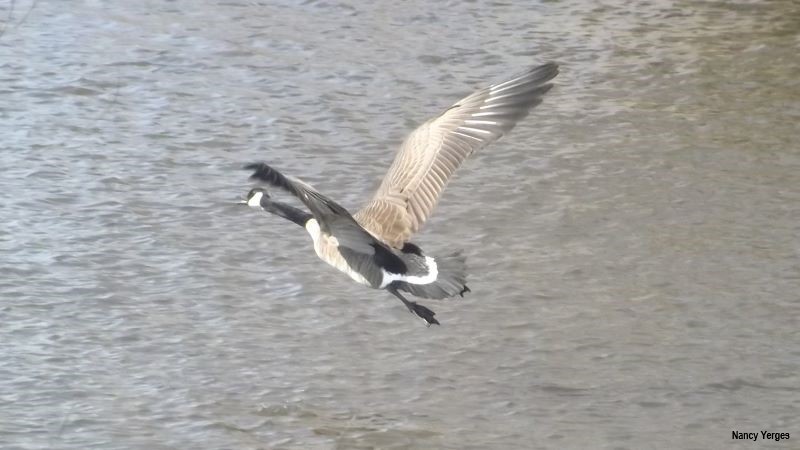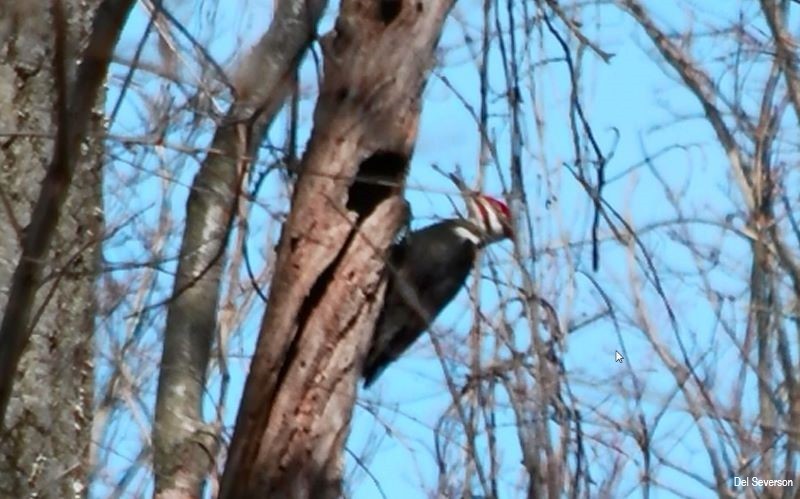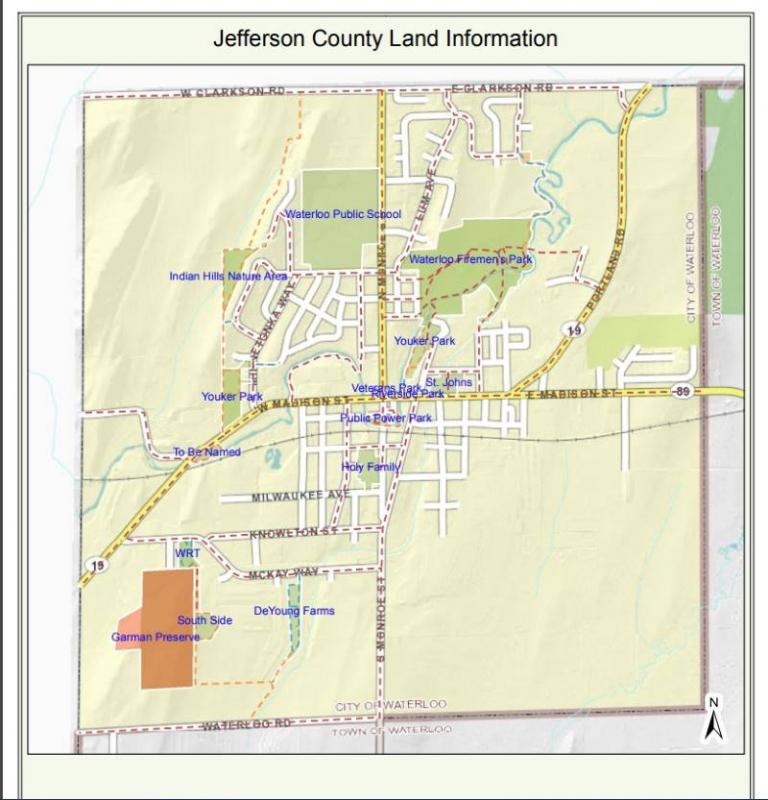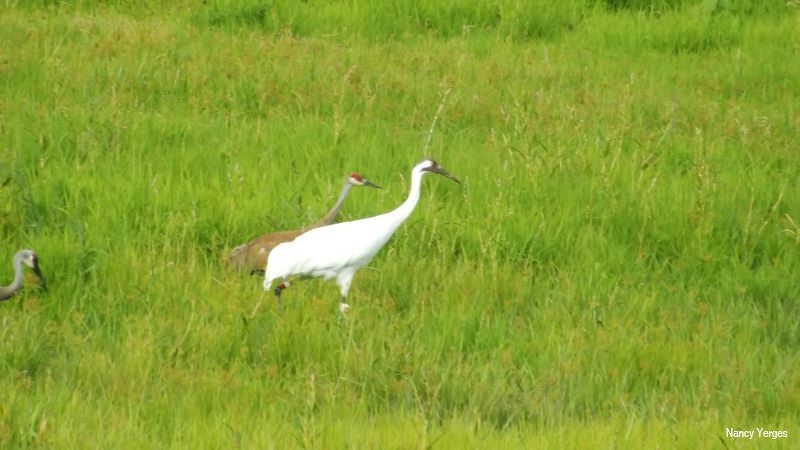
Spring Birdwatching in Waterloo
Spring Birdwatching in Waterloo is exciting as migratory bird species return.
Arrivals and courtship liven up Winter’s gray silence.
During and after Spring migration, early mornings and evenings are pleasantly loud with birdsong. Feeders and yards bustle with brightly colored new arrivals flaunting their breeding plumage. Birds are busy claiming territories, finding partners and building nests. Resident (non-migratory) birds also gear up for nesting season. Male cardinals call out warnings from tree tops and utility lines. “Watch it! Watch it! Watch it!” We enjoy Spring birdwatching in Waterloo from our windows, decks, and backyards. However, residents and visitors can get an even better Spring birding experience in area parks and preserves though hiking, biking, canoeing, or simply picnicking in the right spot. Restaurants and public restrooms are conveniently nearby.

Map of Waterloo Wisconsin’s Bike Trails, Waterways, Major Roads, Restaurants, and Other Points of Interest,
Waterloo is a small rural community located in the far northwestern corner of Jefferson County.
One of the many reasons residents choose to settle here is because we want a lifestyle close to the rhythms of the natural world. Even downtown, we live up close and personal with wildlife. Local foxes trot down our sidewalks as they travel from their dens to go hunting. They even look both ways before crossing the streets! We appreciate their pest control because many of us have victory gardens in our yards. Migrating Canada geese fly underneath our bridges as they cruise north along the Maunesha River valley. Deer families walk the trails next to yards on the edges of town. Sandhill cranes call out and nest in nearby marshes.
Waterloo is on major migration routes.
The migration cycle is one of the most powerful rhythms of Nature. Waterloo has a variety of quality wildlife habitats: wetlands, woodlands, and grasslands. The Maunesha River runs through Waterloo on its way to the Crawfish River. DNR Wildlife areas, nursery plantations, fields and prairies, and managed preserves are on Waterloo’s borders and nearby. This may be why Waterloo is on major migratory routes, as many species return, or pass through on their way further north. Residents also support wildlife in their neighborhood through plantings, feeders, protecting fox dens, tree planting, nest boxes, and municipal park forestry management practices. Our lifestyle is one reason we have such wonderful Spring Birdwatching in Waterloo.
Spring Birdwatching in Waterloo changes every month.
First come the waterfowl and waders.
Geese and ducks (such as Mergansers, Buffleheads, and Teal) arrive in February and March. Cranes, herons and pelicans arrive in March and April, or even earlier. Although they can be seen in many places in Waterloo, migratory waterfowl and waders can be most easily viewed by the public at the Waterloo Wildlife Area.
The Waterloo Wildlife Area
- Great Blue Heron
- A Pair of Sandhill Cranes Performing Their Courtship Ritual
- Sandhill Crane Courtship Display in A Field
- Migrating Tree Swallows Arrive and Huddle on a Branch
- A Common Sandpiper Wades in the Shallows
- Two White Pelicans Swim in the Maunesha River
- Green Heron on the Grassy Riverbank in March
- Green Winged Teal
- Northern Shoveler Pair in the Waterloo Wildlife Area in April
April is for bluebirds!
April and May are peak times to see migratory songbirds and warblers because they are out and about seeking territories and looking for mates. Eastern Bluebirds are very easy to see and have a reputation for fearlessness. That’s why we say April is for bluebirds. Male Eastern bluebirds seem to be everywhere at the Garman Preserve parking area and at the Waterloo Regional Trailhead as they claim territory and defend nests. Include Eastern bluebirds while Spring Birdwatching in Waterloo. Learn More: The Waterloo Regional Trailhead

Male Eastern Bluebirds Perch on Fenceposts and Other High Visibility Places During the April Breeding Season
Birding Hotspots in Waterloo
The Dr. J. S. Garman Preserve offers unique opportunities for Spring birdwatching in Waterloo.
The Garman Preserve is open to the public and one of the area birding hotspots in the Spring. The Preserve contains the most very large and old trees within Waterloo city limits, which make it appealing to woodpeckers and other cavity nesting birds such as wood ducks. You may startle some as you hike on the trails. It also has a very small resident Pileated Woodpecker population. It’s unusual for this species to be so far south. Keep your eyes and ears open for them as you walk by the Indian Mounds. Listen for their loud KIK-KIK-KIK calls and the deep booming sounds they make while pecking for insects in large snags.
The Garman Preserve is well maintained by Jefferson County and has picnic areas and hiking trails. For complete information about the preserve visit The Dr. J. S. Garman Preserve
Visit the e-bird website for area migratory bird info and area birdwatching hotspots, with illustrated checklists ebird website
Firemens Park offers easily accessible Spring birdwatching in Waterloo.
Warblers and songbirds are the most colorful migrants. After they return males molt into their splendid breeding plumage. They can be most easily seen at the spacious and historic Waterloo Firemens’ Park, especially along the Maunesha River, at the walkbridge downslope from the lower baseball diamond. The City bike trail goes through the park, along the Maunesha River. For more information about Firemens Park visit Waterloo Firemens Park
The Maunesha River
The Maunesha River is a tributary to the Crawfish River. It passes through wetlands and pastures, and through the center of Waterloo. The rich soils, plentiful insects and plant life make it popular with the birds. Although Firemens Park is Waterloo’s showcased park, Waterloo has several small public parks, such as Youker Park, along the Maunesha River. They are easy to access from main roads and good places for Spring birdwatching in Waterloo. For more information and park maps visit Waterloo parks and Waterways
Source:Waterloo’s CORP Plan
Faville Grove Sanctuary
Habitat Restoration
Faville Grove Sanctuary is located in Waterloo Township, on Highway 89, between Waterloo and Lake Mills. It is owned and managed through a collaboration between non-profit organizations and private landowners. The sanctuary supports the bird species mentioned here and many more, because special habitat types are actively managed and maintained within it. Other lands within are being carefully restored to prairie types and oak savannahs, the original native plant communities. This work is mostly done by volunteers, under the oversight of a resident Land Steward. The high quality of its habitat make Faville Grove one of the most precious and unique assets to birdlife in Jefferson County.
Virtual Tours
Meet Land Steward Drew Harry at Facebook Page for Faville Grove Sanctuary
To take a virtual stroll of Faville Grove Sanctuary visit: virtual stroll story maps
Watch volunteers working in special habitat areas on YouTube Faville Grove YouTube Videos
- Male Yellow Warbler Perched on Twigs at Faville Grove Sanctuary
- White Crowned Sparrow in Willow Shrub
- Chipping Sparrow Perched on a Fir Branch, Holding a Blade of Dry Grass in its Beak.
- Male Palm Warbler
- Female Northern Harrier Soars Above the Waterloo Marsh
Visit the Sanctuary
Faville Grove Sanctuary is the largest and most managed natural area for Spring Birdwatching in the Waterloo township. You owe it to yourself to learn more about it and visit! The Sanctuary offers guided tours, volunteer opportunities and limited public access. Land Steward Drew Harry said ‘If you visit Faville Grove in the next few weeks, you’ll find Wood Ducks, Song Sparrows, Blue-winged Teal, Bald Eagles, Woodcock, and Eastern Bluebird, and much more! For those interested in volunteering on prescribed burns or pulling garlic mustard, please contact Drew Harry at [email protected].
For information about tours, areas open to the public, and volunteer opportunities : Faville Grove Sanctuary and Volunteer Wisconsin
Other non-profit organizations sponsor annual volunteer activities
Other non-profit organizations sponsor annual volunteer activities which provide unique opportunities to view migratory and nesting birds, as well as other wildlife, in the Waterloo area. They also offer opportunities to help with wildlife research and habitat restoration efforts.
Maunesha River Alliance Maunesha River Alliance and Maunesha River Alliance Facebook page
International Crane Foundation Midwest Crane Count Jefferson County
Cornell Lab of Ornithology Birdcast Migration Tools
Project Feeder Watch Project Feeder Watch
One of the best things about birding in the late Spring are all the baby birds!
Two Canada Goose goslings swim with their mother at Faville Grove Sanctuary in May
I hope you enjoyed this blog post and go Spring Birdwatching in Waterloo.
Many thanks to Drew Harry, Jeff Pieterick, Del Severson, and Nancy Yerges for their stunning photographs. Photographer names are on the lower right corner of photographs.
[molongui_author_box]











































